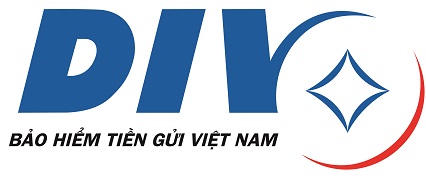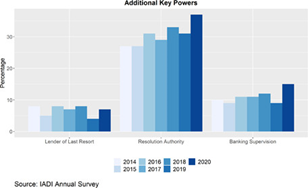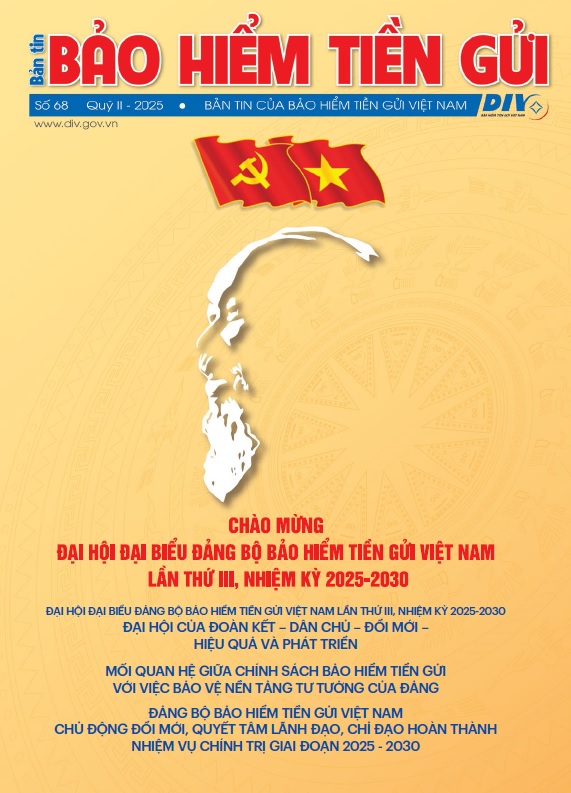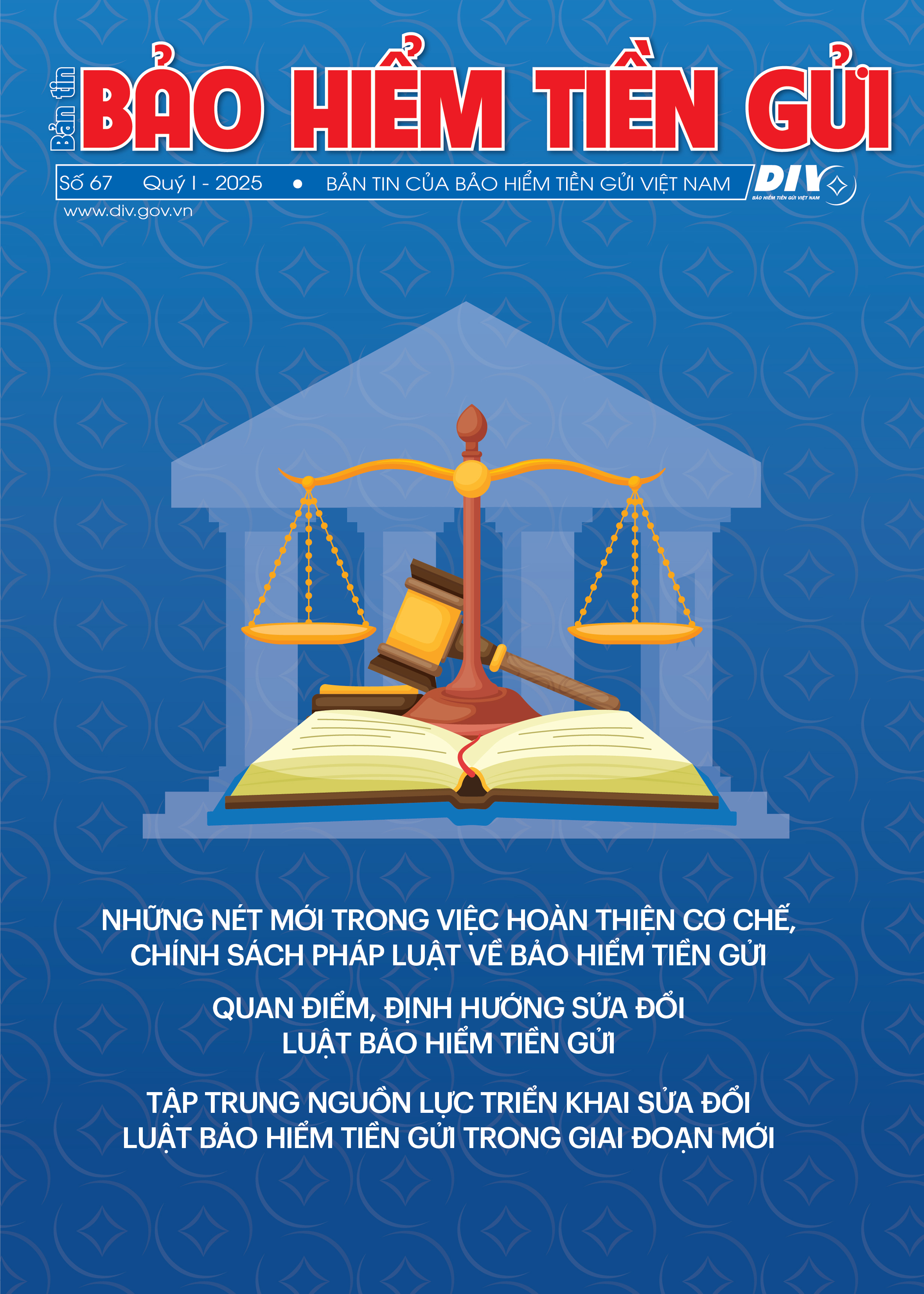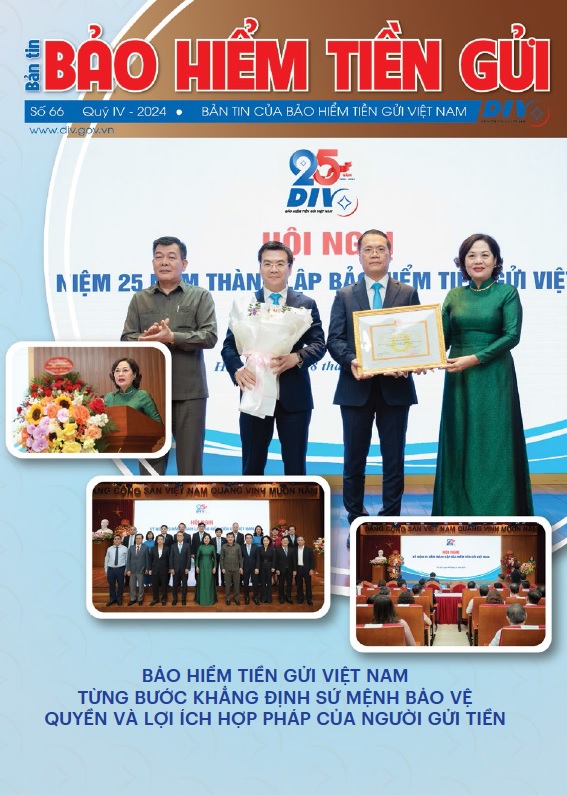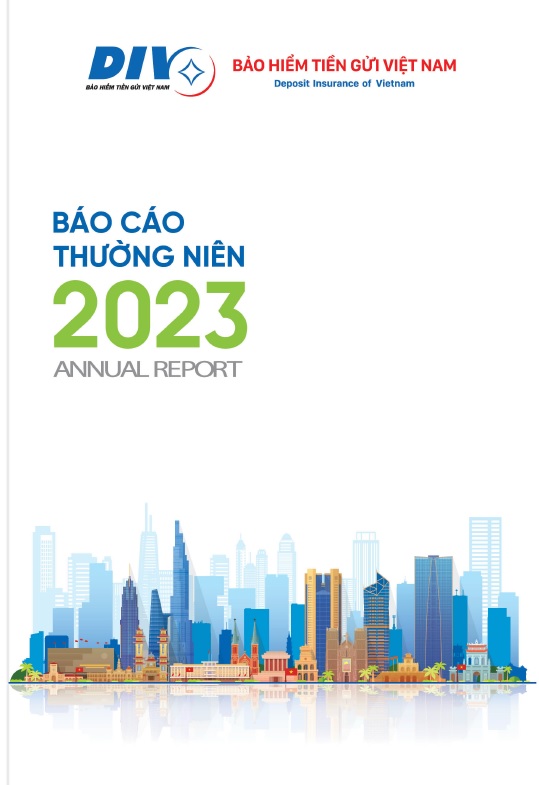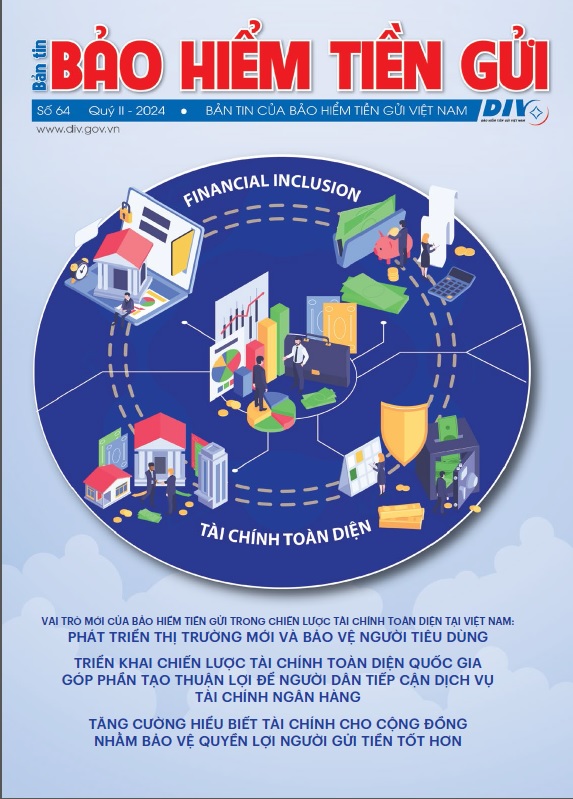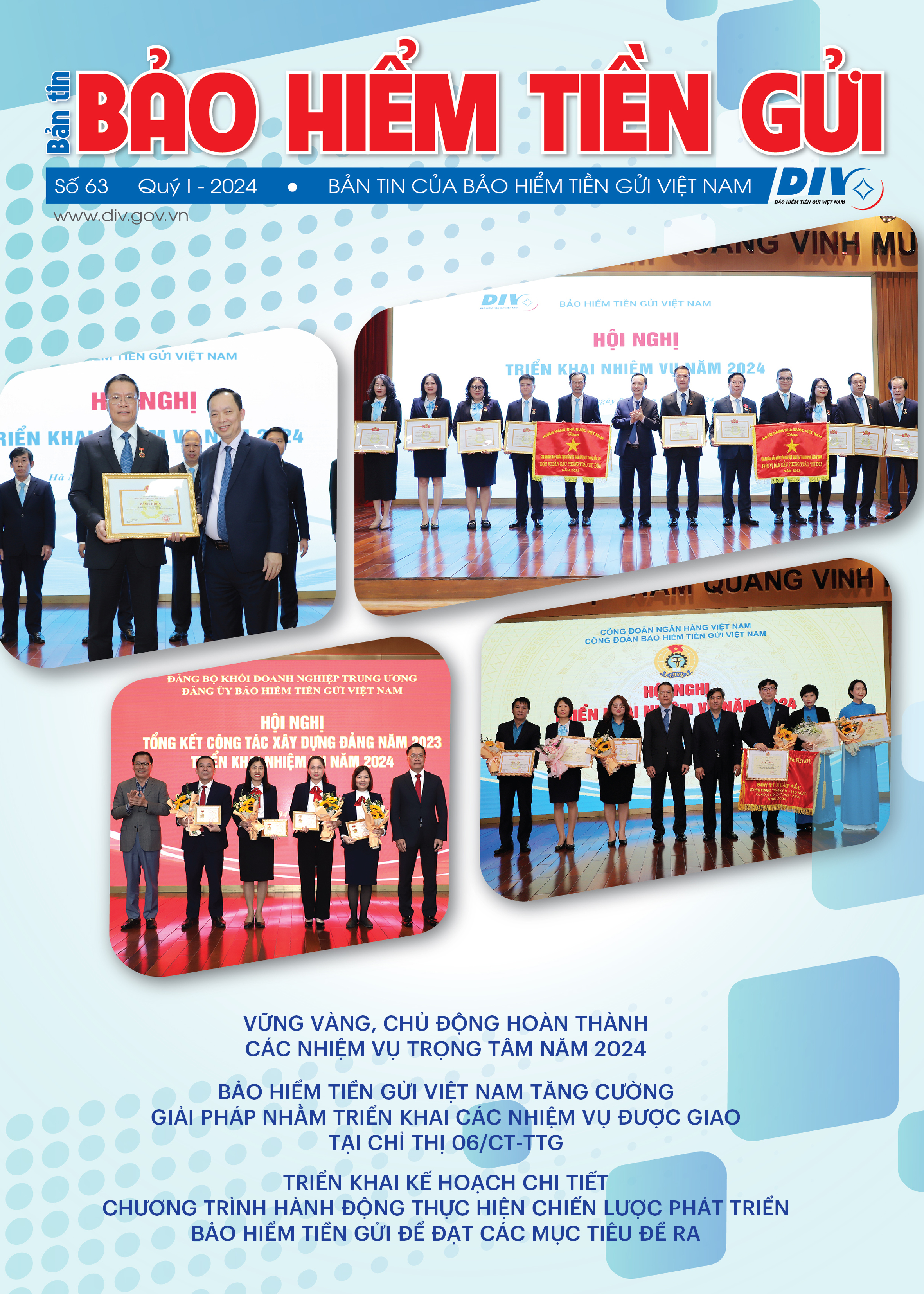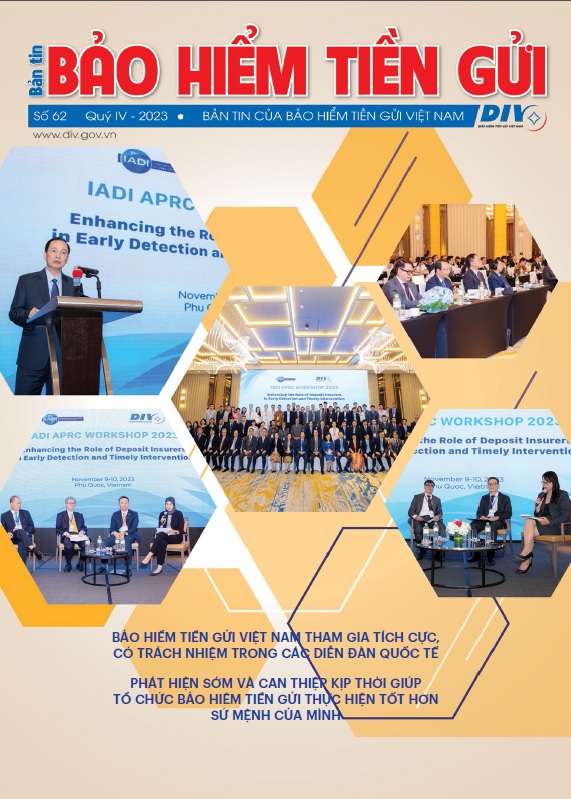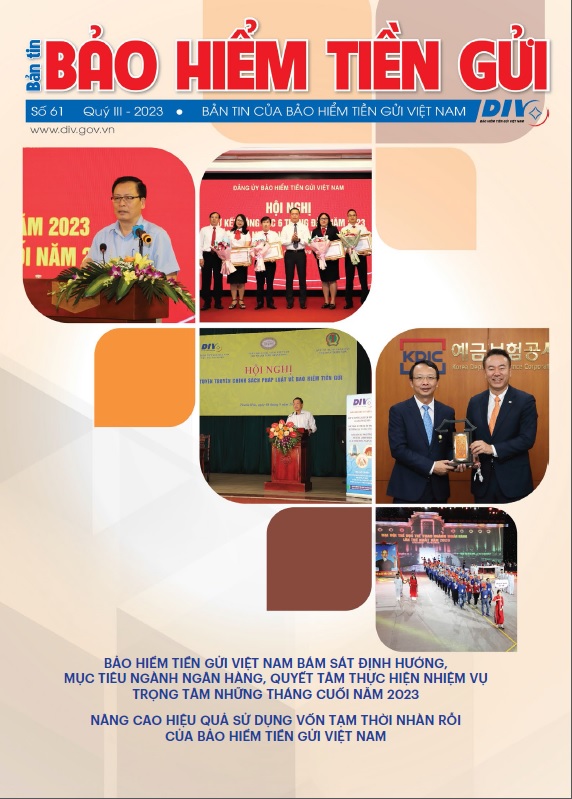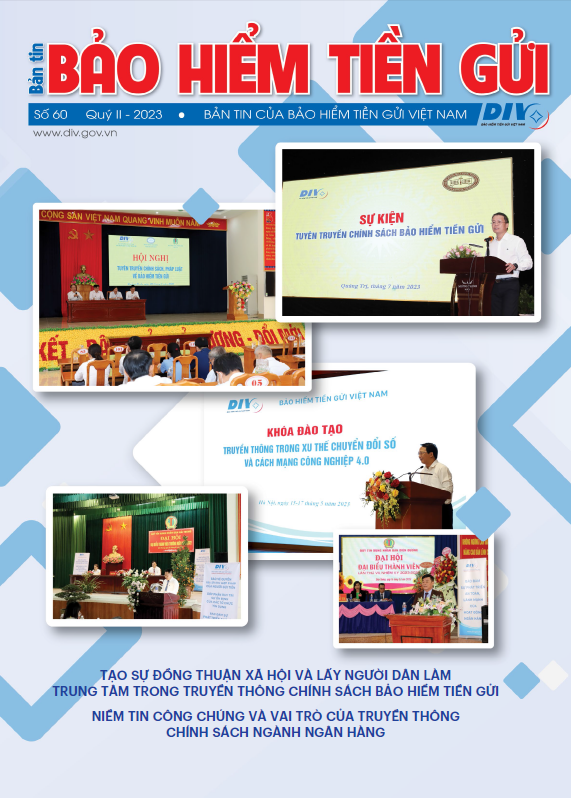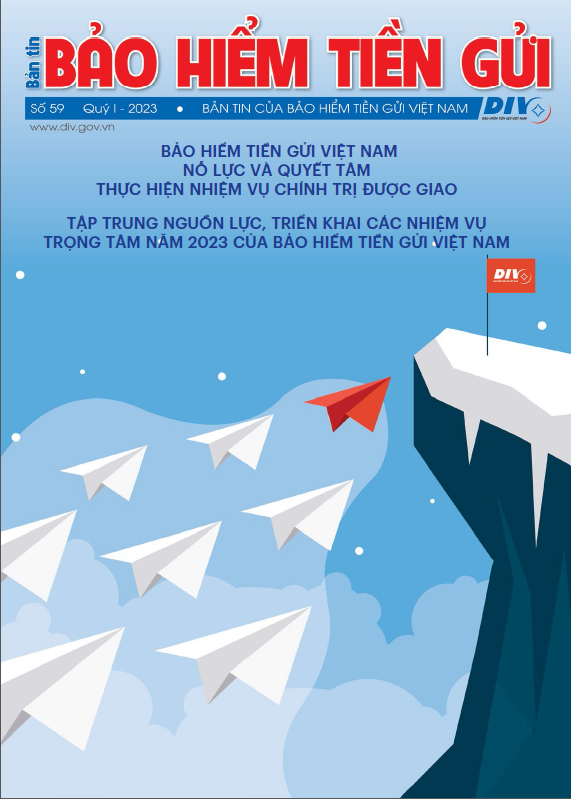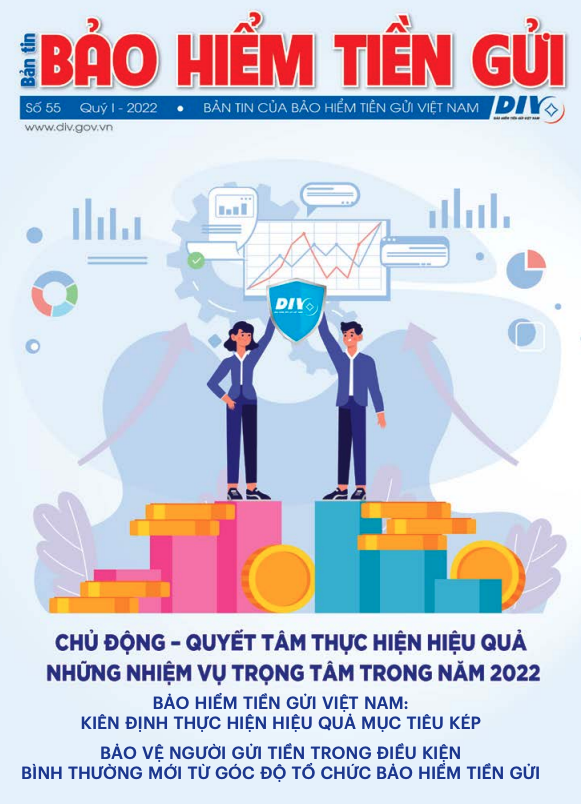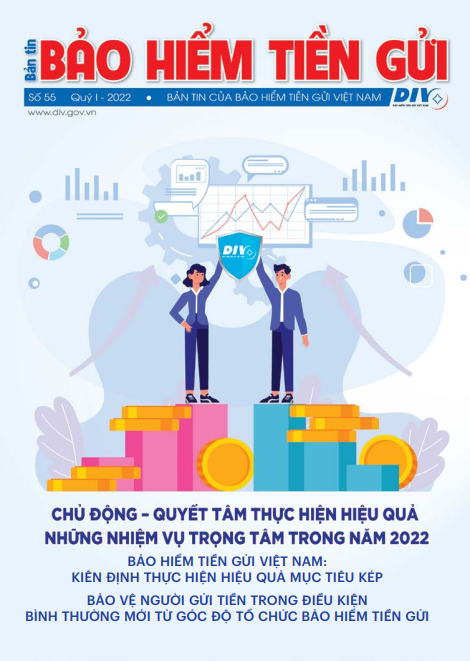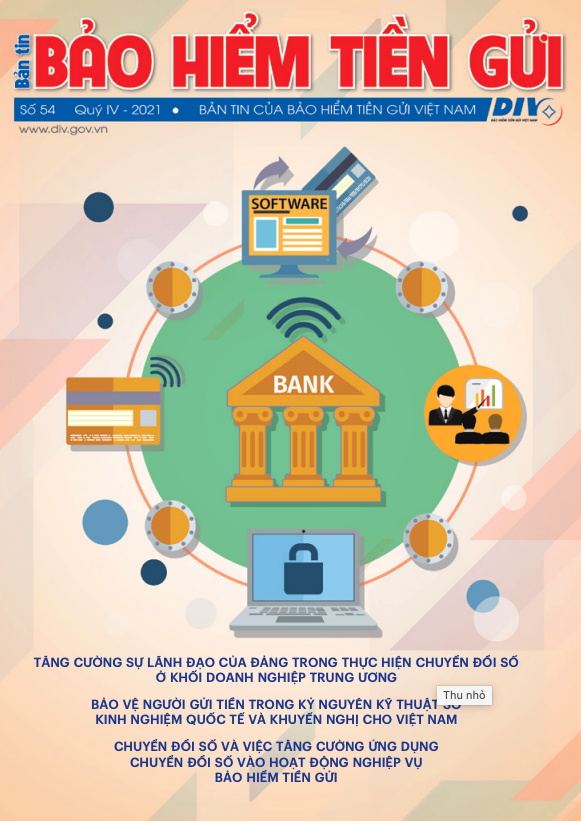The 15th National Assembly approved the Law on Credit Institutions 2024 in its fifth extraordinary session. The 15th National Assembly passed the Law on the principles of exercising prudence and thoroughness, fulfilling the need to restructure the CI system according to the Party's policies and the National Assembly's resolution while also maintaining the socialist-oriented market economy principle; ensuring hereditariness and uniformity in the legal system in accordance with international accounting standards and practices; enhancing CIs' self-reliance and sense of responsibility; enhancing the resilience of the CI system; and increasing banking inspection, examination and supervision.
Additionally, with the passing of the Law on Credit Institutions, the DIV's role in the CI restructuring process is emphasized, in developing and approving recovery plans and supporting measures to restore CIs under special control, support compulsorily transferred commercial banks, and protect CIs under special control in case they go through bankruptcy.
Promoting the DIV's role in supporting and resolving troubled credit institution
Accordingly, regarding the recovery plans of the CIs under special control, Article 169 of the Law on Credit Institutions 2024 regulates the development and approval of recovery plans. Specifically:
"Within 60 days from the day the CI under special control receives a request document from the Special Control Board specified in Clause 7, Article 167 of this Law, the CI under special control would finish developing a recovery plan and submit it to the Special Control Board.
Within 30 days of receiving the CI under special control's recovery plan, the Special Control Board proceeds to evaluate the feasibility of the recovery plan and report to the State Bank of Vietnam (SBV).
For the People's Credit Funds' (PCF) recovery plan, the Special Control Board should coordinate with the Deposit Insurance of Vietnam and the Co-operative Bank of Viet Nam in evaluating the feasibility of the recovery plan.
The SBV conducts an assessment and grants approval of the recovery plan within 60 days from the date the SBV receives the reports from the Special Control Board specified in Clause 2 of this Article or within 60 days from the date the Prime Minister decides to implement the special loan mechanic specified in Clause 4 of this Article. In case the SBV does not approve of the recovery plan, the SBV should send informative documents to the credit institution and the Special Control Board.
In case the recovery plan suggests applying a 0% interest rate and unsecured special loan(s), the SBV submits the matter to the Prime Minister for consideration. The Prime Minister would decide to apply the unsecured special loan with a 0% per annum interest rate measure before approving the recovery plan.
The time limit specified in Clauses 1, 2, and 3 of this Article may be extended by the SBV but not more than double the original time limit."
Regarding the recovery plan implementation support measure for CIs under special control:
Article 171 of the 2024 Law on Credit Institutions stipulates that CI under special control, which is a commercial bank, co-operative bank, or financial company, will receive one or more of the following support measures:
"a) Receiving special loan(s) from the SBV, the DIV, and other CIs according to the provisions of Point b, Clause 1, Clause 2, Article 192 of this Law;
b) Being exempted from interest on refinancing loans and special loans from the State Bank;
c) Receiving deposits or loans from supporting CIs with preferential interest rates;
d) Buying debts and corporate bonds from supporting CIs. These debts and corporate bonds are being classified as qualifying debt groups according to the regulations of the SBV; resell those debt and corporate bonds to supporting CIs;
e) Being allowed to enter into an agreement and select one or more supporting CIs to partake in the implementation of the recovery plan;
f) Be entitled to receive management and administrative personnel from supporting CIs; to receive technological support;
g) In case the CI has receivables that must be withdrawn, the CI can have the receivables that must be withdrawn allocated based on financial capacity in the principle that the total allocation of receivables that must be withdrawn and the amount that must be set aside as a provision is equal to the difference in revenue and expenditure from the annual business results of the CI. The time limit for the allocation of the receivables that must be withdrawn is ten years from the time the SBV approves and is only applicable for receivables recognized up until the date when the CI is placed under special control;
h) When implementing the "capital charter increase" solution as provided in the recovery plan, shareholders and capital contributors are allowed to own shares and capital contributions that exceed the limit on ownership of shares and capital contributions prescribed in Articles 63 and 77 of this Law. Shareholders and capital contributors must have a roadmap to reduce their share ownership and capital contributions to comply with the limit;
i) Other measures in accordance with the authority of the SBV.
2. CIs under special control, especially PCF or microfinance institutions, will receive one or more of the following support measures:
a) Measures specified in Points b, c, d, đ, e, g, and i in Clause 1 of this Article;
b) Microfinance institutions are entitled to receive special loans from the SBV, DIV, and other CIs according to the provisions of Point B, Clause 1, Clause 2, Article 192 of this Law;
c) PCFs are entitled to receive special loans from the Co-operative Bank of Viet Nam from the "People Credit Fund System Safety Guaranteeing Fund" with an interest rate down to 0% per annum."
Supporting measures for compulsorily transferred commercial banks are as follows:
Article 182. Support measures for compulsorily transferred commercial banks:
"1. Compulsorily transferred commercial banks are subject to one or more of the following measures:
a) Selling unsecured bad debts or collateralized bad debts of which collaterals are being distrained, the collaterals are invalidly documented to the debt handling organizations;
b) Receiving deposits or loans from the transferee according to the compulsory transfer plan or agreement;
c) Buying debts or corporate bonds held by the transferee which are being classified as qualifying debt groups according to the provisions of Law; reselling debt, resell corporate bonds to the transferee according to agreement or in case these debts are converted into bad debts;
d) Being entitled to receive management, administrative, and control personnel from the transferee; receiving technological support and other supporting activities according to agreement;
e) Being exempted from paying loan interest on refinancing loans and special loans from the SBV;
f) Being allowed to receive special loans from the SBV, DIV, and other credit institutions according to the provisions of Point B, Clause 1, Clause 2, Article 192 of this Law;
g) Other measures in accordance with the authority of the SBV".
Regarding the case when a CI under special control is placed into bankruptcy
Article 188 of the 2024 Law on Credit Institutions regulates the bankruptcy of CIs under special control:
"1. The bankruptcy plan of a CI under special control is developed when it falls into one of the following cases:
a) The CI under special control does not submit a valid recovery plan within the specified period prescribed in Clause 1, Article 169, Clause 1, Article 176 of this Law; does not meet the requirements for compulsory transfer specified in Clause 1, Article 179, Clause 1, Article 180 of this Law; and does not meet the criteria for dissolution prescribed in Clause 1, Article 187 of this Law;
b) Commercial banks fall into the cases specified in Clause 7, Article 179, Clause 5, Article 180, and Clause 9, Article 183 of this Law;
c) Credit institutions fall into the cases specified in Clause 2, Article 204 of this Law;
d) CIs under special control must propose bankruptcy plans within 60 days from the date the requested document from the Special Control Board is received, as prescribed in Clause 7, Article 167, Clause 5, Article 172, or Clause 6, Article 178 of this Law.
2. The Special Control Board coordinates with the CI(s) under special control and the deposit insurer(s) to develop a bankruptcy plan for the CI under special control and propose it to the SBV. The SBV then submits the plan to the Government for approval, except for the cases specified in Clause 3 of this Article.
After the bankruptcy plan is approved, The SBV submits to the Prime Minister to decide a deposit insurance coverage limit for depositors, up to a maximum of the insured individual's deposit amount at the CI.
3. The Special Control Board has the responsibility to coordinate with the PCF(s) under special control, the DIV, and the Co-operative Bank of Viet Nam to develop a bankruptcy plan for the PCF(s) under special control and propose the plan to the SBV. The SBV then submits the plan to the Prime Minister to decide on a deposit insurance coverage limit for depositors, up to a maximum of the insured individual's deposit amount at the PCF(s).
After the Prime Minister decides on the deposit insurance coverage limit, the Special Control Board is responsible for coordinating with PCF(s) under special control, deposit insurers, and the Co-operative Bank of Viet Nam to complete the bankruptcy plan for the PCF(s) under special control. Then the Special Control Board would submit the plan to the SBV for approval".
Amending the Deposit Insurance Law to be more consistent with the Law on Credit Institutions.
With the new provisions in the 2024 Law on Credit Institutions, the DIV's role continues to be promoted and enhanced. To better fulfill its mission and participate more deeply in the restructuring process to better protect the legal rights of depositors, contributing to ensuring the safety of the CI system, it is necessary to amend the Deposit Insurance Law as soon as possible to be more consistent with the new points in the 2024 Law on Credit Institutions.
The Deposit Insurance Law is the highest legal basis regulating deposit insurance activities in Vietnam. By legislating and specifying the contents, the Deposit Insurance Law has improved the effectiveness and enforceability of the deposit insurance policy, bringing the policy of protecting depositors and ensuring the safety of the banking system to a higher level. During the implementation process, the provisions of the Law have come to life and exerted strong effectiveness.
However, after 10 years of implementation, the Deposit Insurance Law has also revealed a number of inadequacies and limitations due to changes in practice. Furthermore, the Law does not stipulate, unclearly stipulate, or inconsistently stipulate the activation trigger of the arising obligation to reimburse depositors or waiving deposit insurance premiums, matters regarding uninsured deposits, deposit insurance policy exploitation, etc.
Amending and supplementing the Deposit Insurance Law is a thorough policy of the National Assembly, the Government, and the SBV; this is also an important task assigned to the DIV. From there, the DIV can participate more deeply in the restructuring process to better protect the legal rights of depositors, contributing to ensuring the safety of the credit institution system.
Information from the DIV shows that the organization has generally completed the proposed contents in the amended and supplemented Deposit Insurance Law. The proposals focus on the following main issues: Improving the financial and operational capacity of the DIV; supplementing the powers and duties of the deposit insurer; completing legal regulations so that the DIV can participate more effectively in the CI restructuring process; and completing rules on reimbursement. Specifically:
On improving the financial and operational capacity: Proposing to competent authorities to amend and supplement relevant legal regulations, ensuring a complete legal basis is available for increasing the DIV's charter capital in order to maintain the deposit insurer's financial capacity; affirming the State's commitment and enhancing depositors' confidence in deposit insurance policy, ensuring resources for effective implementation of deposit insurance activities;
Strengthening financial capacity through diversifying investment methods and portfolios; supplementing the technique of borrowing loans from the SBV in case the deposit insurer's capital resources are insufficient to reimburse depositors;
Conducting research on additional investment portfolios, including: Buying and selling bonds guaranteed by the Government; depositing funds at high-performing commercial banks; buying and selling bonds, debentures, bills, and certificates of deposit issued by well-performing commercial banks;
Regarding regulations on reimbursement, the DIV is conducting researches to ensure the prevention of deposit insurance policy exploitation, on the coordination responsibilities between the DIV and relevant agencies; creating a legal corridor for the DIV to participate in liquidating insured institutions' assets to maximize recovery value.
At the same time, developing contingency plans and practicing reimbursement scenarios for each type of insured institution; developing a reimbursement handbook for each type of insured institution to standardize the reimbursement process, diversifying payment methods, and applying information technology to shorten the reimbursement time.
Department of Research and International Cooperation (translation)
